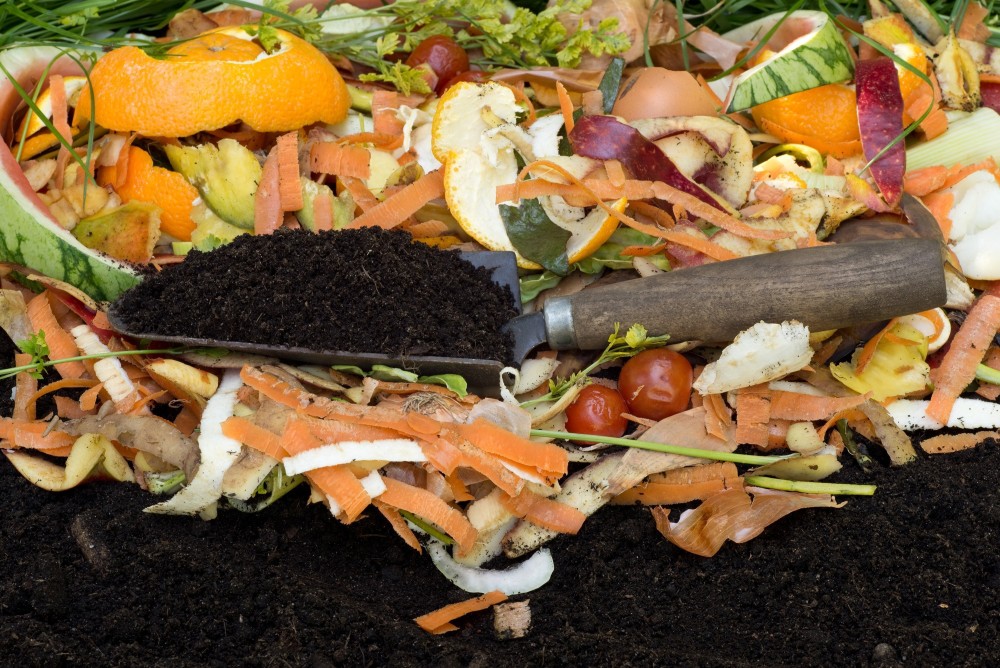By Barbara Brotman
Chicago Tribune.
Karen Rozmus stood in front of a room full of municipal and county officials and experts on solid waste disposal and talked about my cantaloupe rinds.
Not my cantaloupe rinds specifically. But the food scraps of the 725 households in Oak Park, Ill. participating in the village’s food scrap composting program, one of which is mine.
I listened proudly at the recent Transforming Waste in Chicagoland symposium, organized by the nonprofit Delta Institute, as Rozmus, Oak Park’s environmental services manager, spoke about CompostAble, the only such public program operating in the state.
Participating Oak Park residents pay $14 a month and get a small pail for kitchen scraps, a starting supply of compostable plastic bags and a 96-gallon cart for organics, the food scraps plus yard waste.
We can put far more in the pails than we could in a backyard compost pile, not just vegetable scraps, but meat, bones, dairy products and compostable paper and utensils.
Then we send it out as if it were dry cleaning.
The village’s trash hauler, Waste Management, picks it up and takes it to a facility in Romeoville, Ill., where it is ground up, put into crop rows called windrows, turned regularly for aeration and transformed into compost.
And twice a year, the village hauls back some finished compost and invites program participants to help themselves.
I peered at the photos that Rozmus, who created Oak Park’s program, showed of a windrow turner, the massive machine that aerates its compost piles, making its way down a long row.
Were my apple cores in there? My overripe bananas? Was this the final resting place of our leftover Thai food?
It is an honorable place. My little under-sink pail, and no, it doesn’t smell, is apparently doing serious environmental good.
“Food scraps are a major part of the solid waste stream,” said Eve Pytel, the Delta Institute’s director of strategic priorities, and thus a prime target for reducing the amount of waste sent to methane gas-producing landfills.
“If you want to take your next big slice of the pie out, you’ve got to get food scraps,” she said.
Oak Park is doing so, Rozmus said, and taking out a good-sized slice, about 2,300 pounds a week.
“That’s about a ton a week that we’re not sending to the landfill,” she said.
Solid waste experts see composting as a way to push past the recycling plateau many towns have reached. Seattle is serious about doing so; its City Council voted recently to impose a fine, albeit a nominal one, on households that put food waste into their regular garbage instead of compost bins.
Public industrial composting programs are being tried in a number of areas. New York City has a pilot curbside pickup program that is now serving 100,000 households.
In this area, a private company, Evanston.Ill.-based Collective Resource, provides home pickup of food scraps to some 200 households. And there have been a few attempts at establishing public programs.
Another northern Chicago suburb, Highland Park, started a food scrap composting program in 2012, but it was halted after six months when the composting facility experienced numerous problems and closed down.
But Oak Park’s program, also begun in 2012 as a pilot, is still going. “We’re all jealous,” said Walter Willis, executive director of the Solid Waste Agency of Lake County, Ill., who is working on establishing food scrap recycling programs there.
“Everybody’s watching us. It’s very exciting,” Rozmus said happily.
But the program may not fly in other communities, she said: “There’s an attitude in Oak Park where people get it. They understand environmental issues. They’re willing to pay a little extra to teach their kids the right thing to do.”
And even so, only 10 percent of residents participate.
I signed up eagerly. I had thought about composting in my backyard for years; but thinking was as far as I ever got.
Katie Kralik, a high school chemistry teacher who lives in Oak Park, did compost in her backyard. But not any more. She is now a happy customer of the village’s composting program.
Backyard composting wasn’t easy, she said. “It took forever. We couldn’t keep it hot enough,” she said.
The compost from the village program is better than anything she and her family ever made, she said.
Not only is her under-sink bin odorless, but without food scraps in it, her conventional garbage is, as well, she said. And there isn’t much of it.
“We don’t even have to take it out every week,” she said.
Neither do we. The composting program has been a revelation. Once we separated out the food scraps, we saw that the vast majority of our garbage was food scraps.
And much of it made me feel guilty.
All those melons I throw out untouched because they turn out to be tasteless; all those chicken carcasses that a better person than I would make soup with; all those vegetables that turned rotten in the back of the refrigerator, how could I waste so much food?
Now the guilt is gone. The more food I put in my under-sink pail, the more compost can be made. I’m not wasting food; I’m providing the ingredients of a valuable natural resource.
“Food scraps are the new frontier,” Rozmus said. “As soon as we start getting more infrastructure, I think it’s going to grow faster than recycling. People have been recycling for 25 years, and I think they’re ready for it.”
I left the symposium a happy resident of the new frontier. I had seen where my cucumber peelings go; and the planet and I both liked it.














































































































































































































































































































































































